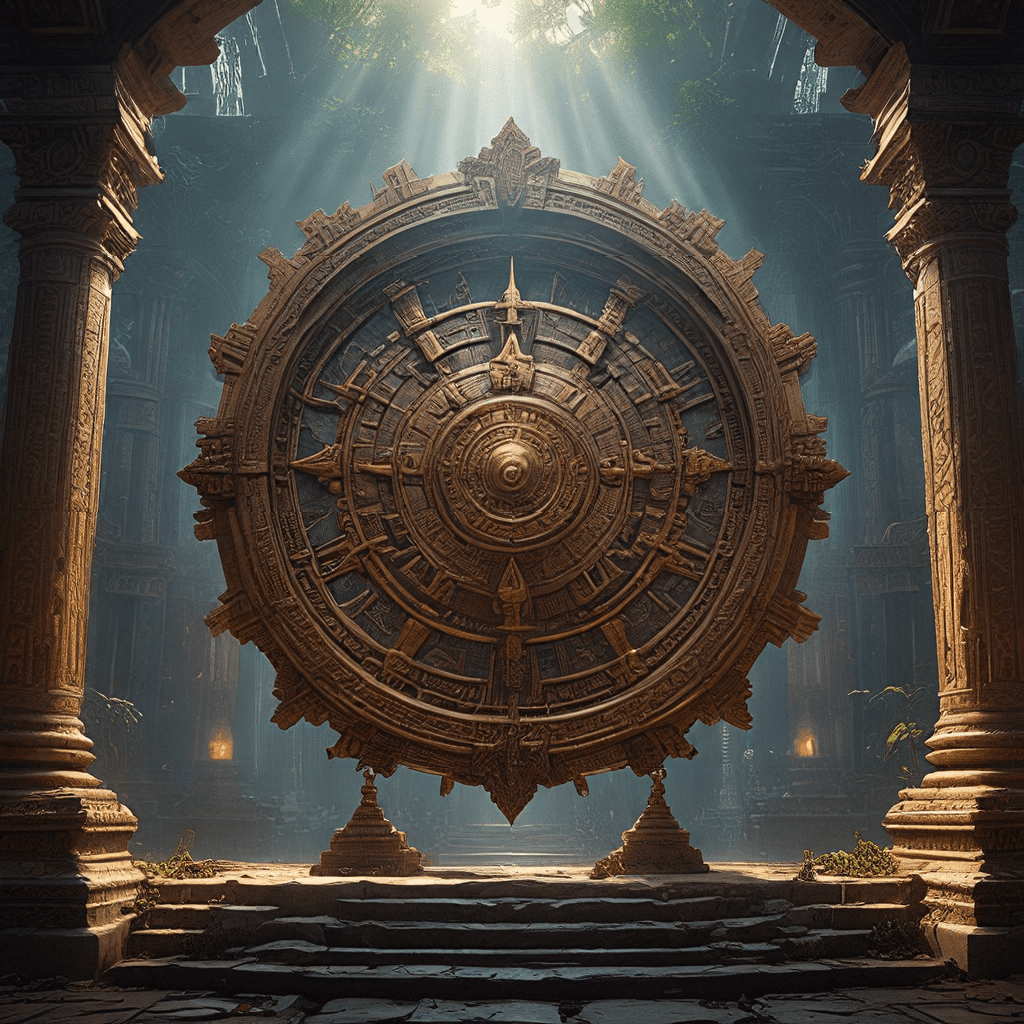The Hidden Meanings of Temple Symbols: Unlocking the Secrets of Ancient Egypt
Ancient Egypt was a land of mystery and wonder, filled with ancient rituals, powerful gods, and fascinating symbols. These symbols weren’t just decorations – they held profound meanings, reflecting the Egyptians’ deep understanding of life, death, and the cosmos. This article delves into some of the most significant symbols found in ancient Egyptian temples, revealing the hidden secrets they hold.
1. The Power of Symbolism in Ancient Egyptian Religion
Symbolism was central to ancient Egyptian religion, acting as a powerful language that conveyed complex ideas and beliefs. These symbols were woven into daily life, from intricate hieroglyphs on temple walls to everyday objects like jewelry and amulets.
Symbols served as a bridge between the mortal world and the divine realm. They represented gods, goddesses, concepts, and powers that were considered essential to human well-being and prosperity. Understanding these symbols allows us to gain a deeper appreciation for the richness and complexity of ancient Egyptian beliefs.
2. The Eye of Horus: Protection and Royal Authority
The Eye of Horus, known as the Wadjet, is one of the most recognizable symbols in ancient Egypt. It represents the eye of the god Horus, who was believed to have lost his left eye in a battle with the evil god Seth. The Eye of Horus was believed to possess healing and protective powers and was often depicted as a symbol of good health and warding off evil.
In addition to its protective qualities, the Eye of Horus also signified royal authority. The pharaoh was seen as the embodiment of Horus, and the Eye of Horus was often incorporated into his crown, symbolizing his divine right to rule.
3. The Ankh: Life, Immortality, and the Afterlife
The Ankh, a symbol shaped like a cross with a loop at the top, is a powerful emblem of life, immortality, and the afterlife in ancient Egyptian belief. It was believed to represent the breath of life and was closely associated with the god Osiris, who was responsible for the underworld and the resurrection of the dead.
The Ankh was often used in funerary rituals and offerings. The symbol was placed on tombs and sarcophagi to ensure the deceased’s safe passage into the afterlife. It was also used in daily life as a charm to bring good health and prosperity.
4. The Scarab Beetle: Rebirth and Renewal
The scarab beetle, known as Khepri in ancient Egyptian mythology, was a sacred symbol associated with rebirth, renewal, and the rising sun. The scarab beetle was believed to roll a ball of dung, much like the sun god Ra rolled the sun across the sky each day.
The Egyptians believed that the scarab beetle symbolized the cycle of life, death, and resurrection. It was seen as a representation of the sun god Ra, who was reborn every morning, bringing light and life to the world. The scarab was often carved into amulets and placed in tombs, representing the hope for eternal life.
5. The Djed Pillar: Stability and Strength
The Djed pillar is a symbol shaped like a four-sided pillar with four horizontal bars at the top. This ancient symbol was closely associated with the god Osiris, representing his backbone, which was said to have been broken during his battle with Seth. The Djed was also a symbol of Osiris’ resurrection, signifying the triumph of life over death.
Beyond its association with Osiris, the Djed pillar also represents stability, strength, and cosmic order. It was often depicted in temples and tombs, signifying the enduring power of the gods and the hope for a stable and prosperous future.
6. The Was Scepter: Power and Royal Authority
The Was scepter, a curved staff with a hook at the top, was a symbol of royal power and legitimacy in ancient Egypt. It was associated with the god Osiris, who was responsible for maintaining order in the underworld. The Was scepter was often depicted in the hands of the pharaoh, signifying his authority over both the living and the dead.
The Was scepter was used in ceremonies and rituals, representing the pharaoh’s divine right to rule and his role as the intermediary between the people and the gods. It served as a reminder of the pharaoh’s power and his responsibility to uphold the cosmic order.
7. The Uraeus Cobra: Protection and Divine Power
The Uraeus cobra, a serpent with a distinctive upright hood, was a powerful symbol of divine protection, royal power, and the goddess Wadjet. The Uraeus was often depicted on the pharaoh’s crown, signifying his divine authority and the goddess’s protection.
The Uraeus was believed to possess magical powers, specifically the ability to ward off evil spirits and protect the pharaoh from harm. The goddess Wadjet was associated with the Lower Nile region and was seen as a fierce protector of the pharaoh and the Egyptian people.
8. The Winged Sun Disk: Divine Power and Cosmic Order
The Winged Sun Disk, also known as the Benben, is a symbol of divine power, cosmic order, and creation in ancient Egypt. It represents the sun god Ra, who was believed to have emerged from this disk at the beginning of time. The wings represent the protective power of the gods, and the sun disk symbolizes the life-giving power of the sun.
The Winged Sun Disk was often depicted in temples and tombs, signifying the presence of the gods and the eternal cycle of life, death, and rebirth. It was also used as a symbol of royal power, representing the pharaoh’s connection to the divine and his responsibility to uphold the cosmic order.
In conclusion, ancient Egyptian symbols are more than just decorative elements. They are powerful expressions of a complex and fascinating belief system that continues to intrigue and inspire us today. By understanding the hidden meanings behind these symbols, we can gain a deeper appreciation for the rich cultural heritage of ancient Egypt.



